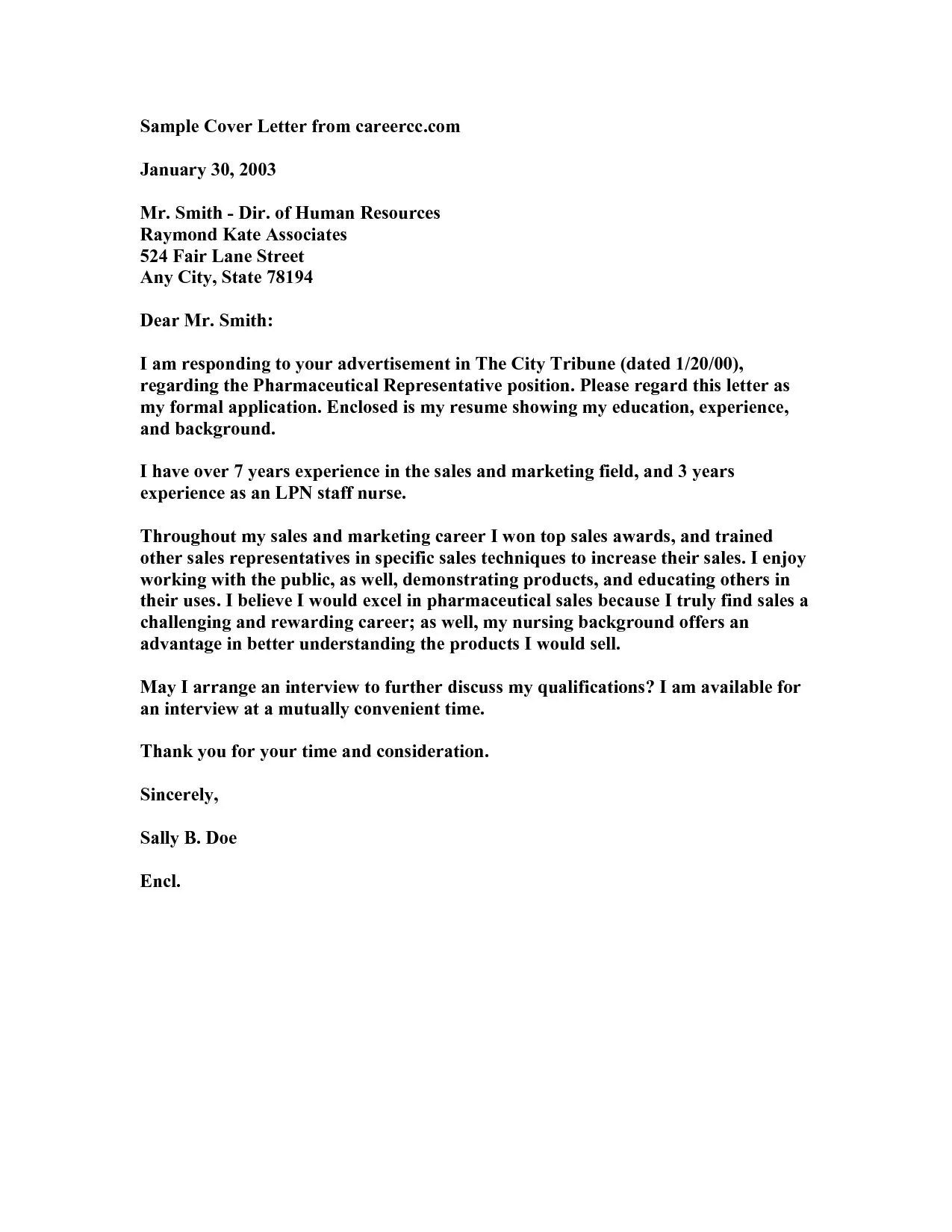Crafting the Perfect Mother Baby Nurse Cover Letter
A compelling cover letter is your first chance to make a positive impression when applying for a Mother Baby Nurse position. It’s more than just a formality it’s your opportunity to showcase your passion, skills, and experience to potential employers. This guide will walk you through the essential components of a winning cover letter, helping you stand out from the competition and land your dream job. Remember, your cover letter is a marketing tool – it sells you as the ideal candidate.
Understanding the Importance
Why a Cover Letter Matters
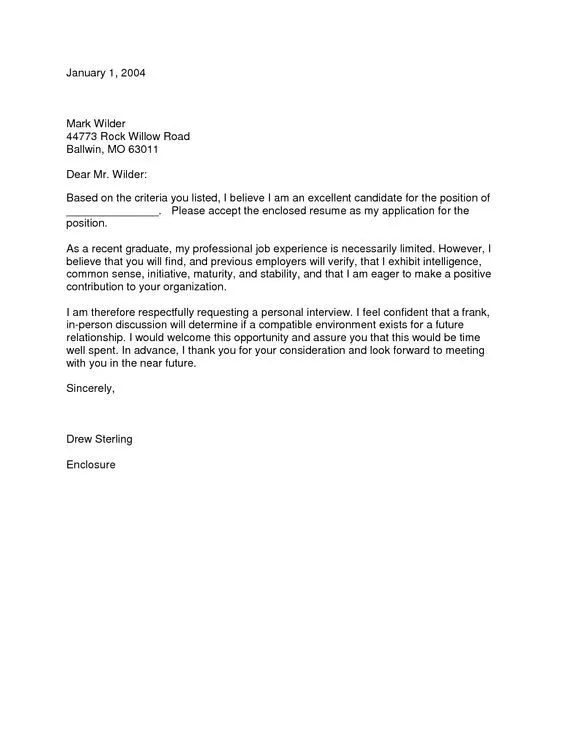
In the competitive field of nursing, especially for specialized roles like Mother Baby nursing, a well-crafted cover letter can significantly boost your chances. It allows you to personalize your application, demonstrate your understanding of the role, and express your genuine interest in the specific facility. A cover letter complements your resume, providing context and detail that your resume might lack. It’s your chance to tell a story about why you’re the perfect fit.
Highlighting Relevant Skills and Experience
Your cover letter should immediately highlight the skills and experiences most relevant to the Mother Baby Nurse position. Carefully review the job description and identify the key requirements. Then, select examples from your background that directly address these requirements. Be specific and provide quantifiable results whenever possible to demonstrate the impact of your work. Use action verbs to describe your accomplishments and emphasize your value to the employer.
Key Skills to Showcase
Essential skills to highlight include patient assessment and care, breastfeeding support and education, postpartum care, newborn care, and patient education. Communication skills, both written and verbal, are also critical. Demonstrate your ability to work collaboratively with other healthcare professionals and to provide compassionate care to both mothers and newborns. Mention any certifications, such as NRP (Neonatal Resuscitation Program) or BLS (Basic Life Support), that you possess.
Relevant Experience to Mention
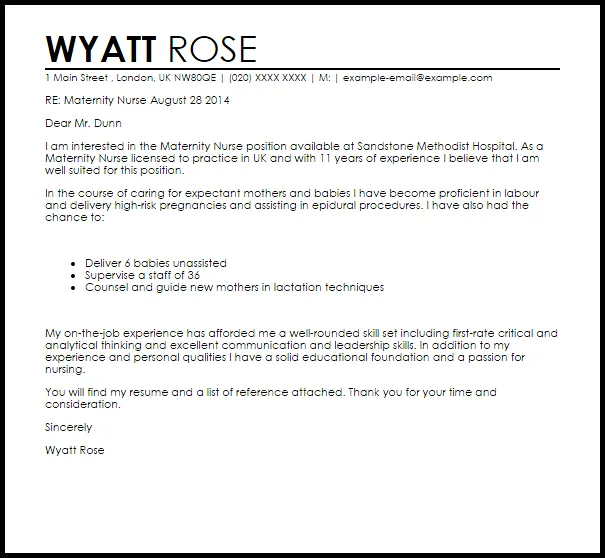
Detail your experience in mother baby nursing or related fields. Include the name of the hospital or clinic, the dates of employment, and your specific responsibilities. Quantify your achievements whenever possible for example, ‘Provided care for an average of 10 mother-baby couplets per shift’ or ‘Reduced readmission rates by 15% through improved patient education.’ If you have limited experience, focus on transferable skills from other nursing roles or volunteer experiences. Demonstrate your passion for maternal care by discussing your experience and its impact on patients.
Structuring Your Cover Letter for Impact
A well-structured cover letter is easy to read and leaves a positive impression. Follow a clear and logical format to ensure your key points are effectively communicated. Structure your letter into distinct sections, each with a specific purpose. This makes it easier for the hiring manager to quickly grasp your qualifications and assess your suitability for the role. Properly formatted cover letters shows professionalism and attention to detail.
Header and Contact Information
Start with a professional header that includes your name, address, phone number, and email address. If applying for a specific position, include the hiring manager’s name and title, if available. Address the letter to the hiring manager or the appropriate contact person. If you cannot find a name, use a professional greeting like ‘Dear Hiring Manager’.
The Opening Paragraph Grabbing Attention
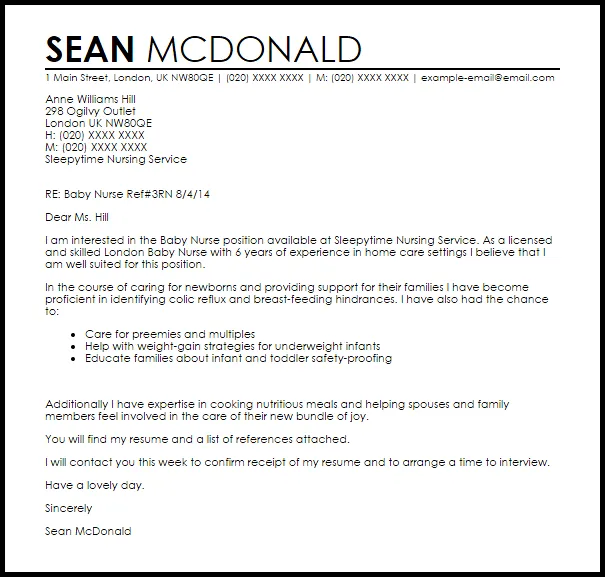
The opening paragraph is crucial. It’s your first opportunity to capture the reader’s attention. State the position you’re applying for and briefly mention where you saw the advertisement. Then, immediately highlight your most impressive qualification or a specific reason why you’re a great fit for the role. For example, you could start by stating your years of experience or your passion for maternal care. Make it compelling and memorable.
Body Paragraphs Showcasing Your Value
Use the body paragraphs to expand on your qualifications and demonstrate your value. Highlight your skills and experiences, providing specific examples and quantifiable results. Explain how your skills align with the job description’s requirements. Focus on the key aspects of the role and emphasize your ability to provide excellent patient care, communicate effectively, and collaborate with healthcare professionals. Use each paragraph to showcase a different aspect of your expertise.
The Closing Call to Action
In your closing paragraph, reiterate your interest in the position and summarize your key qualifications. Include a call to action, such as ‘I am eager to learn more about this opportunity and discuss how my skills and experience can benefit your team.’ Thank the hiring manager for their time and consideration and express your availability for an interview. Provide your contact information again, making it easy for them to reach you.
Essential Content to Include
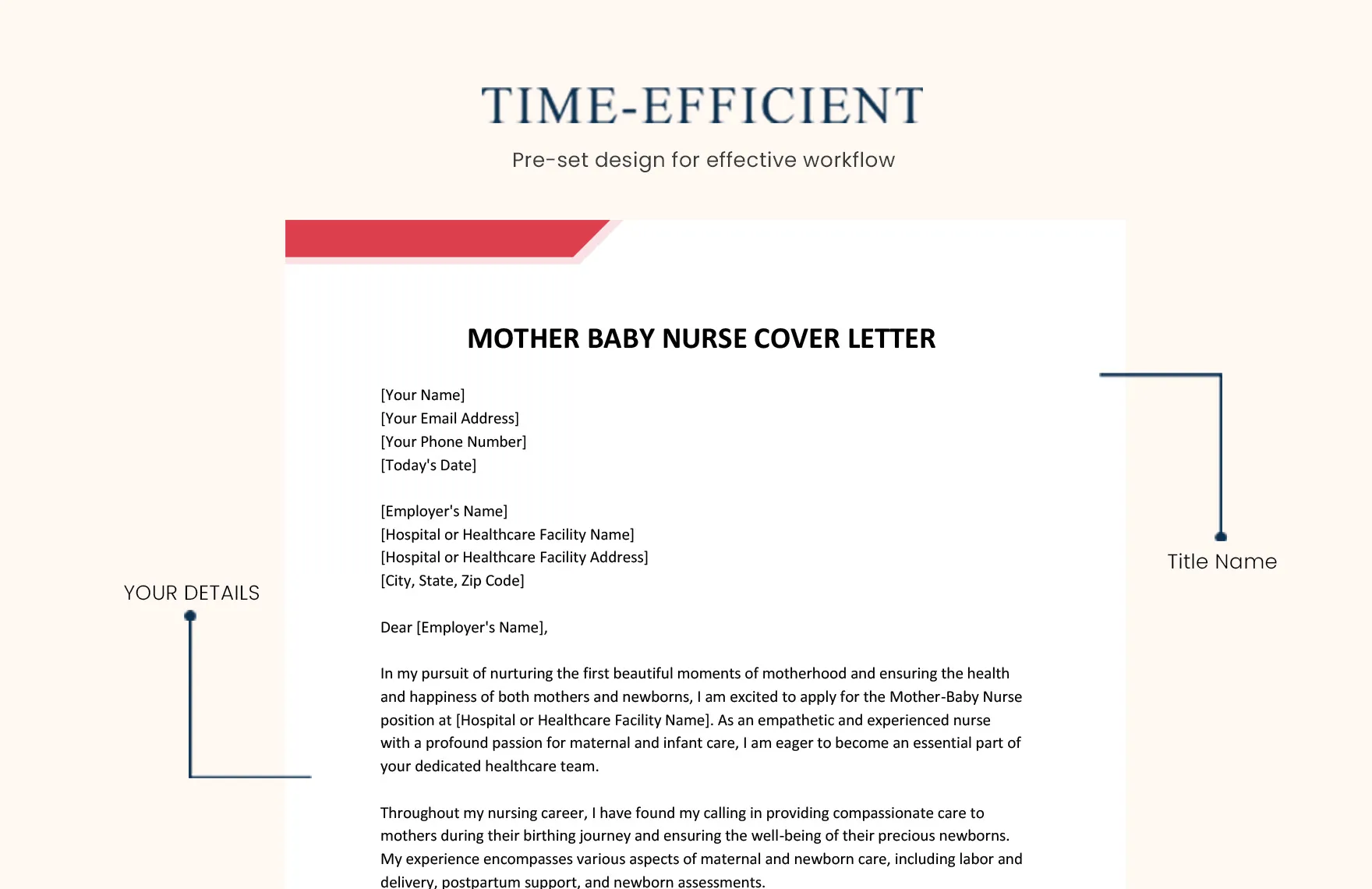
The best cover letters go beyond simply restating your resume. They provide context, personality, and a clear explanation of why you are the best candidate for the job. The following elements are key to including in your cover letter to highlight your suitability for the mother baby nurse position.
Expressing Passion for Maternal Care
Show your passion for maternal care. Explain what motivates you to work with mothers and newborns. This could be your personal experiences, your dedication to patient well-being, or your interest in the challenges and rewards of this specialization. Make your passion clear to the hiring manager as this is an important part of the role.
Mentioning Specific Achievements
Include specific achievements, such as successful patient outcomes or improvements in patient satisfaction. Use numbers and statistics to quantify your accomplishments and demonstrate the impact of your work. Did you implement a new breastfeeding support program that improved success rates? Did you receive any awards or recognition for your work? Highlighting these details shows that you’re a high-achieving candidate.
Tailoring the Cover Letter
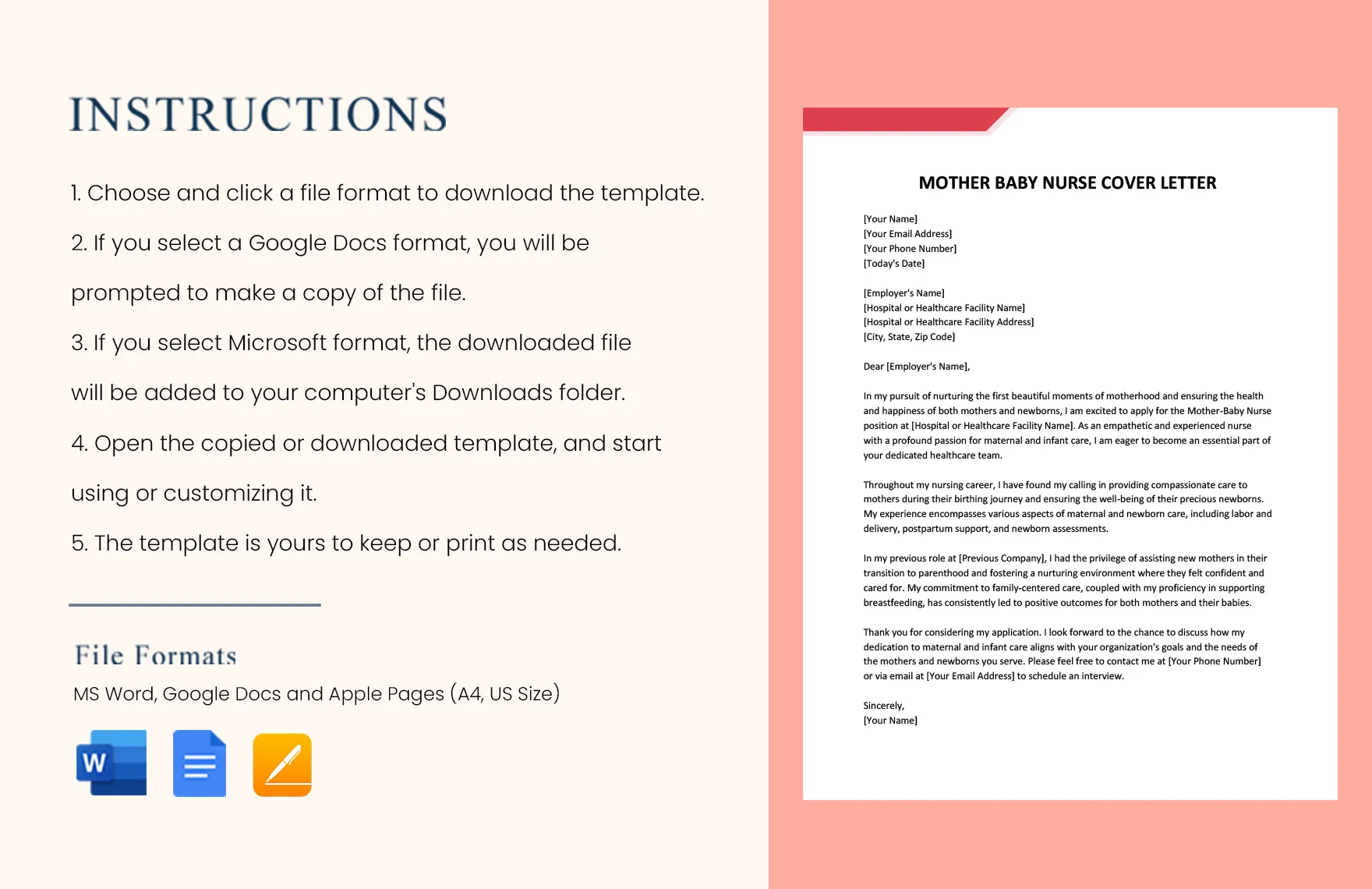
Customize your cover letter to each job application. Research the specific facility, its mission, and values to demonstrate your genuine interest. Show that you understand the needs of the organization and that you are well-suited to meet them.
Researching the Facility
Before submitting your cover letter, research the hospital or clinic you’re applying to. Visit their website to learn about their mission, values, and the services they provide. Look for information about their patient care philosophy and any specific initiatives or programs they offer. This research will help you tailor your cover letter and show that you are genuinely interested in the opportunity.
Matching Skills to the Job Description
Carefully review the job description and identify the key skills and requirements. Then, tailor your cover letter to highlight how your skills and experiences align with those requirements. Use keywords from the job description to demonstrate your understanding of the role and your ability to fulfill its responsibilities. This targeted approach helps you show that you’re a perfect match for the position.
Formatting and Presentation
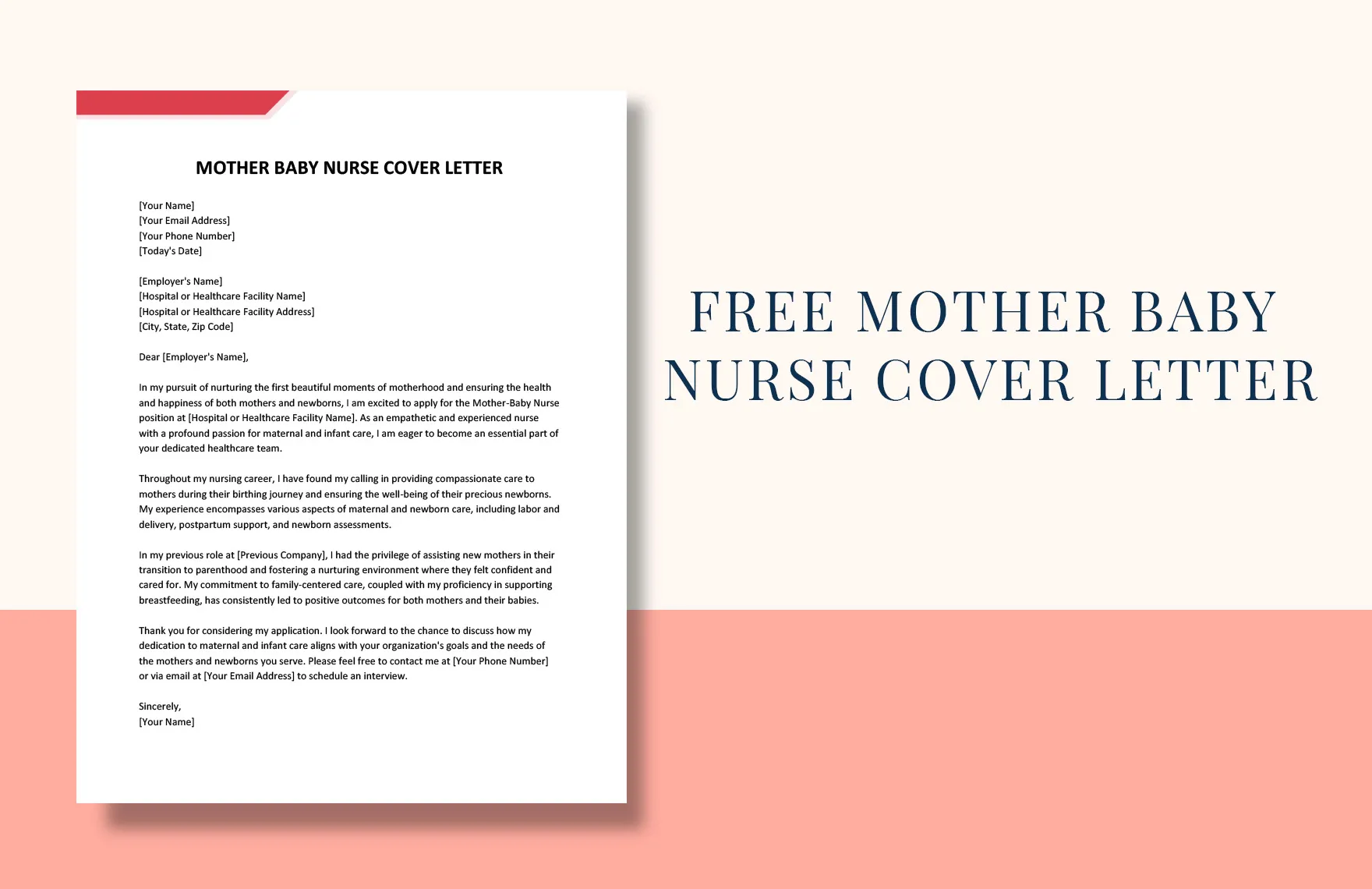
The formatting and presentation of your cover letter are just as important as the content. A well-formatted letter is easy to read and projects a professional image. Poor formatting can create a negative impression, even if your qualifications are strong. Pay close attention to the details, ensuring your cover letter looks polished and professional.
Font and Layout Guidelines
Choose a professional font, such as Times New Roman, Arial, or Calibri, in a readable size (11 or 12 points). Use a clear layout with ample white space to avoid a cluttered appearance. Ensure consistent formatting throughout the document. Use standard margins (1 inch on all sides). Keep paragraphs concise and use bullet points to highlight key information.
Proofreading and Editing
Proofread your cover letter carefully for any typos, grammatical errors, or spelling mistakes. Errors can undermine your credibility. Read your letter aloud, and consider having a friend or colleague review it as well. Ensure the grammar and spelling is correct and that the formatting is consistent.
Common Mistakes to Avoid
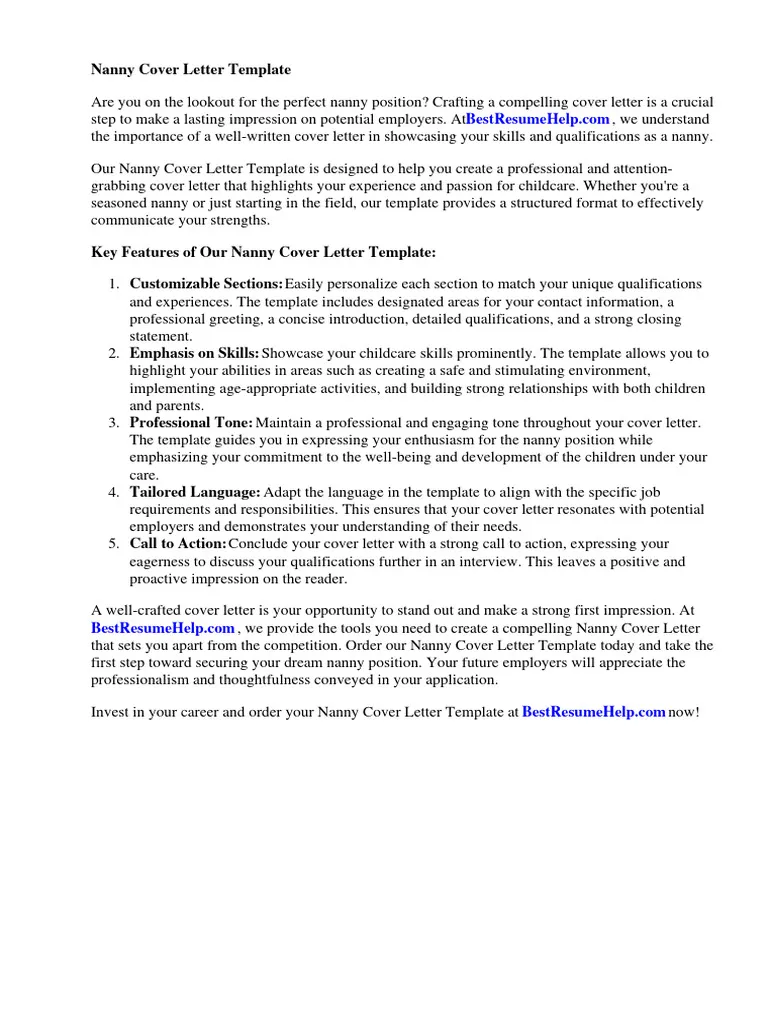
Avoid these common mistakes to ensure your cover letter makes a positive impression.
Generic Cover Letters
Avoid using a generic cover letter that can be sent to any employer. Tailor your letter to each specific job application, highlighting the skills and experiences most relevant to the role. Personalized letters demonstrate your genuine interest and attention to detail, which helps you stand out from the crowd. Customization is key to showing a potential employer you want to be there.
Typos and Grammatical Errors
Carelessly written cover letters with typos and grammatical errors will likely be discarded. Proofread your letter carefully for errors before submitting. Ask a friend to review the letter to catch any issues you may have missed. Proper grammar and spelling show attention to detail and professionalism.
Overly Long Cover Letters
Keep your cover letter concise. Aim for one page in length unless specifically requested otherwise. Hiring managers are busy. Get to the point and highlight your key qualifications. Make every word count. A succinct letter is more likely to be read and appreciated.
In conclusion, a strong Mother Baby Nurse cover letter is a crucial part of your job application. By following the guidelines outlined above, you can craft a compelling letter that showcases your skills, experience, and passion, significantly improving your chances of landing an interview and getting hired. Remember to tailor your letter to each job application, express your passion for maternal care, and proofread carefully. Good luck with your job search!
